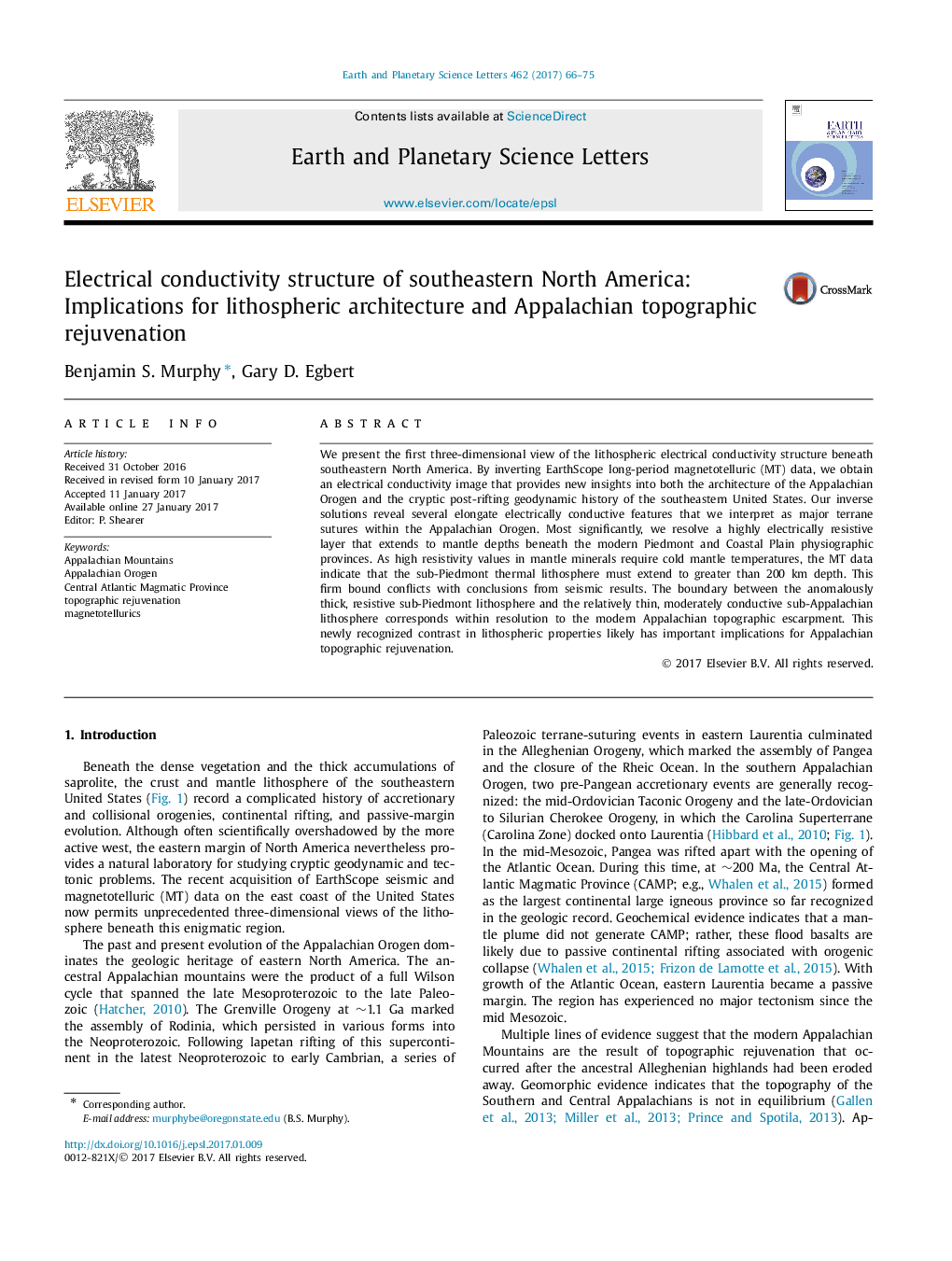| Article ID | Journal | Published Year | Pages | File Type |
|---|---|---|---|---|
| 5779818 | Earth and Planetary Science Letters | 2017 | 10 Pages |
â¢First 3D electrical conductivity image of the lithosphere in the southeastern US.â¢MT data require thick lithosphere (>200 km) beneath the Piedmont.â¢Step in LAB between Piedmont and Appalachians corresponds to topographic scarp.â¢Model that may explain Appalachian topographic rejuvenation is presented.
We present the first three-dimensional view of the lithospheric electrical conductivity structure beneath southeastern North America. By inverting EarthScope long-period magnetotelluric (MT) data, we obtain an electrical conductivity image that provides new insights into both the architecture of the Appalachian Orogen and the cryptic post-rifting geodynamic history of the southeastern United States. Our inverse solutions reveal several elongate electrically conductive features that we interpret as major terrane sutures within the Appalachian Orogen. Most significantly, we resolve a highly electrically resistive layer that extends to mantle depths beneath the modern Piedmont and Coastal Plain physiographic provinces. As high resistivity values in mantle minerals require cold mantle temperatures, the MT data indicate that the sub-Piedmont thermal lithosphere must extend to greater than 200 km depth. This firm bound conflicts with conclusions from seismic results. The boundary between the anomalously thick, resistive sub-Piedmont lithosphere and the relatively thin, moderately conductive sub-Appalachian lithosphere corresponds within resolution to the modern Appalachian topographic escarpment. This newly recognized contrast in lithospheric properties likely has important implications for Appalachian topographic rejuvenation.
Graphical abstractDownload high-res image (112KB)Download full-size image
